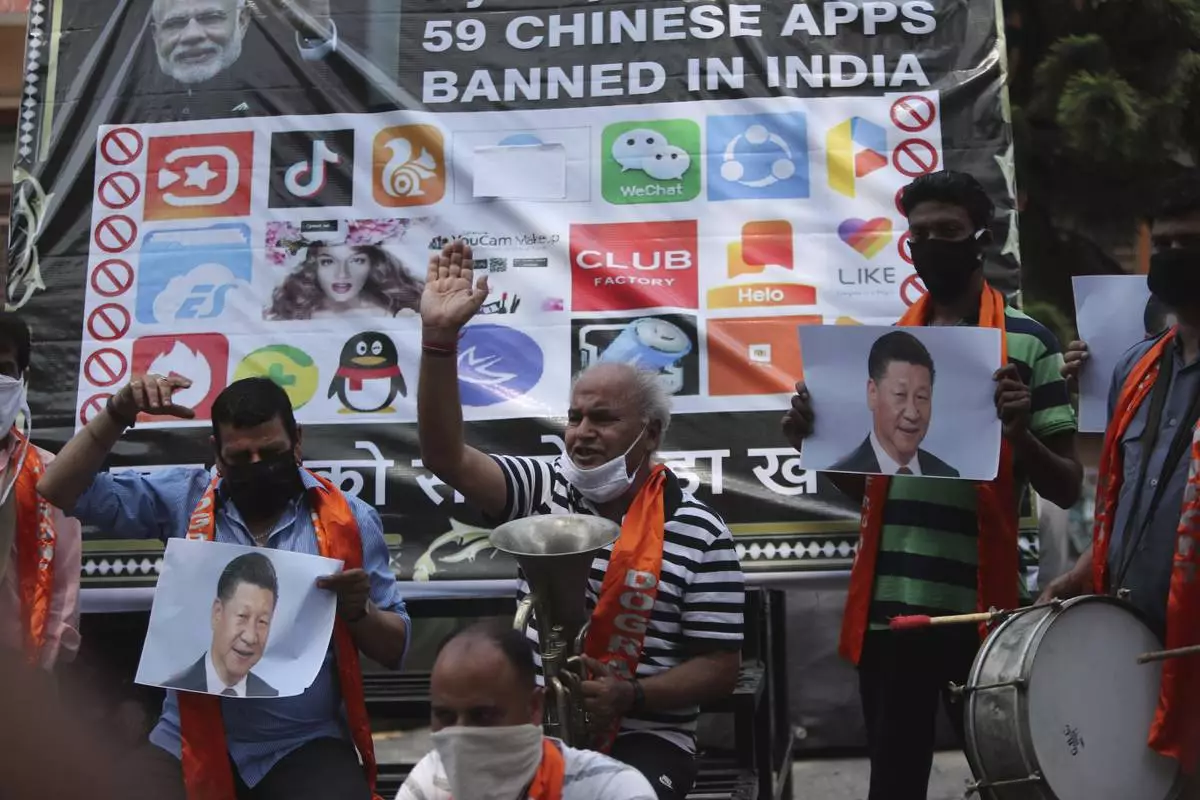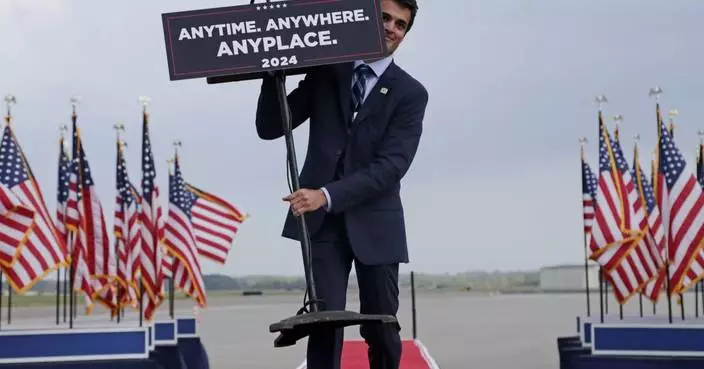The Senate on Wednesday rejected a Democratic attempt to give relief to people hit hardest by new limits on how much of their state and local tax bill they can deduct from federal taxes.
The regulations were a key part of the GOP's 2017 tax code overhaul, limiting the deduction permitted for state and local taxes to $10,000.
Republicans enthusiastically defeated the Democratic move on a 52-43, mostly party-line vote.
The state and local tax, or SALT, provision was a major revenue-raising piece of the 2017 law, permitting that measure's GOP architects to lower taxes elsewhere in the code. But it caused an uproar and cemented strong Democratic opposition to the measure since capping the SALT deduction was seen in part as an assault on so-called blue states with high concentrations of upper-bracket taxpayers.
Republicans from New Jersey were among those who paid a steep political price, losing ground in wealthier suburbs.
"It's hurt so many people in New York who are middle class, not wealthy, and in suburbs throughout the country," said top Senate Democrat Chuck Schumer of New York. "And, by the way, it's probably one of the major reasons the House flipped from Republican to Democrat. So many of those districts in New Jersey and California, New York, and Pennsylvania were affected by this cap and people rebelled."
Some high-tax states like New York and California had tried to create workarounds for taxpayers, including creating charitable funds that taxpayers could contribute to in exchange for a state tax credit. The idea was that people could still deduct their charitable contributions from their income for federal tax purposes.
In June, the IRS enacted a rule prohibiting those workarounds. The Democratic plan would have overturned that rule.
Republicans said that the benefits of the Democrats' failed measure would have overwhelmingly benefited higher-income taxpayers.
"Repealing the SALT cap would give millionaires an average tax cut of $60,000. Meanwhile, the average tax cut for taxpayers earning between $50,000 and $100,000 would be less than $10," said Majority Leader Mitch McConnell, R-Ky. "The middle-class Kentuckians I represent have zero interest in cross-subsidizing the tax bills of millionaires who live in Brooklyn and the Bay Area."
One Democrat opposed the move to lift the SALT cap.
"The vast majority of the benefits of repealing the SALT cap would go to high-income Americans," said Sen. Michael Bennet, D-Colo., one of the Senate's few remaining Democratic deficit hawks. "Repeal would be extremely costly, and for that same cost, we could advance much more worthy efforts to help working and middle-class families all over the country."
NEW DELHI (AP) — The hugely popular Chinese app TikTok may be forced out of the U.S., where a measure to outlaw the video-sharing app has won congressional approval and is on its way to President Biden for his signature.
In India, the app was banned nearly four years ago. Here's what happened:
In June 2020, TikTok users in India bid goodbye to the app, which is operated by Chinese internet firm ByteDance. New Delhi had suddenly banned the popular app, alongside dozens other Chinese apps, following a military clash along the India-China border. Twenty Indian and four Chinese soldiers were killed, and ties between the two Asian giants plunged to a new low.
The government cited privacy concerns and said that Chinese apps pose a threat to India’s sovereignty and security.
The move mostly drew widespread support in India, where protesters had been calling for a boycott of Chinese goods since the deadly confrontation in the remote Karakoram mountain border region.
“There was a clamour leading up to this, and the popular narrative was how can we allow Chinese companies to do business in India when we’re in the middle of a military standoff,” said Nikhil Pahwa, a digital policy expert and founder of tech website MediaNama.
Just months before the ban, India had also restricted investment from Chinese companies, Pahwa added. “TikTok wasn’t a one-off case. Today, India has banned over 500 Chinese apps to date.”
At the time, India had about 200 million TikTok users, the most outside of China. And the company also employed thousands of Indians.
TikTok users and content creators, however, needed a place to go — and the ban provided a multi-billion dollar opportunity to snatch up a big market. Within months, Google rolled out YouTube Shorts and Instagram pushed out its Reels feature. Both mimicked the short-form video creation that TikTok had excelled at.
“And they ended up capturing most of the market that TikTok had vacated,” said Pahwa.
In India, TikTok content was hyperlocal, which made it quite unique. It opened a window into the lives of small-town India, with videos coming from tier 2 and 3 cities that showed people doing tricks while laying down bricks, for example.
But for the most part, content creators and users in the four years since the ban have moved on to other platforms.
Winnie Sangma misses posting videos on TikTok and earning a bit of money. But after the ban, he migrated to Instagram and now has 15,000 followers. The process, for the most part, has been relatively painless.
“I have built up followers on Instagram too, and I am making money from it, but the experience isn’t like how it used to be on TikTok,” he said.
Rajib Dutta, a frequent scroller on TikTok, also switched to Instagram after the ban. “It wasn’t really a big deal,” he said.
The legislation to outlaw the app has won congressional approval and now awaits a signature from Biden.
The measure gives ByteDance, the app’s parent company, nine months to sell it, and three more if a sale is underway. If this doesn’t happen, TikTok will be banned. It would take at least a year before a ban goes into effect, but with likely court challenges, it could stretch longer.
In India, the ban in 2020 was swift. TikTok and other companies were given time to respond to questions on privacy and security, and by January 2021, it became a permanent ban.
But the situation in the U.S. is different, said Pahwa. “In India, TikTok decided not to go to court, but the U.S. is a bigger revenue market for them. Also, the First Amendment in America is fairly strong, so it’s not going to be as easy for the U.S. to do this as it was for India,” he said, in reference to free speech rights in the U.S. Constitution.
As Chinese apps proliferate across the world, Pahwa says countries need to assess their dependency on China and develop a way to reduce it as the apps can pose a national security risk.
The app is also banned in Pakistan, Nepal and Afghanistan and restricted in many countries in Europe.
“Chinese intelligence law and its cybersecurity law can allow Chinese apps to work in the interest of their own security. That creates a situation of distrust and it becomes a national security risk for others,” said Pahwa.
“There should be different rules for democratic countries and for authoritarian regimes where companies can act as an extension of the state,” he added.
—-
This story corrects the expert's erroneous reference to Fourth instead of First Amendment.

FILE- Activists of Jammu and Kashmir Dogra Front shout slogans against Chinese President Xi Jinping next to a banner showing the logos of TikTok and other Chinese apps banned in India during a protest in Jammu, India, July 1, 2020. (AP Photo/Channi Anand, File)










